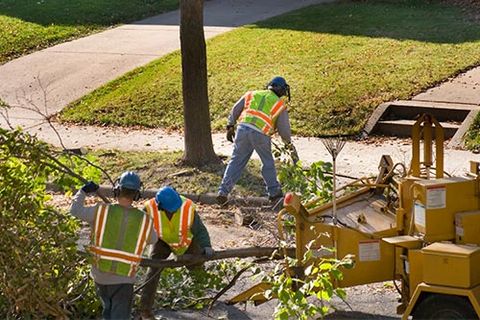5 Reasons to Remove a Tree
Admin • December 7, 2017

Trees release vital oxygen into the air, and they certainly add beauty to a landscape. However, there are times when having trees in your yard may be doing more harm than good. In this case, you're best off removing the hazardous tree and planting a new one — perhaps in a better location. Here are five cases in which you should remove a tree.
1. The Tree Shows Signs of a Serious Fungal Infection
Many different species of fungi can infect trees, and they are not all serious. Anthracnose, for instance, just causes spots to form on the leaves. Powdery mildew disease causes a fuzzy, white buildup to form on the leaves. However, if your tree is developing large cankers or wounds in its trunk, or if there are brackets growing out of its trunk, roots, or branches, these are signs of a more serious fungal infection.
A Certified Arborist can examine your tree and determine which fungal disease is most likely to blame. If your tree has a serious disease, then it's generally best to remove the tree to help prevent the infection from spreading.
2. The Tree’s Branches are Badly Damaged
Often when a tree is damaged by a storm, your tree care expert can just remove the damaged branches, and the tree will recover. However, if the tree is so badly damaged that most of its major branches have cracked and need to be removed, it may no longer have enough leaves to harvest sunlight and sustain life.
Removing the tree before it dies completely eliminates the risk of the tree falling on your house or another structure.
3. The Tree Is Overhanging a Roof
When only a branch or two overhang your roof, you can just trim those branches back periodically. However, when the majority of a tree overhangs your roof or you fear that the prevailing winds will blow branches onto your roof when a storm rolls through, it's best to have the tree removed.
Even if the branches are not directly touching the roof, shade from the tree perpetuates moss growth and premature shingle deterioration.
4. The Tree Is Approaching a Power Line
Trimming trees interwoven with power lines is a very dangerous endeavor. Moreover, a tree can present a hazard before it actually reaches the power lines, since electricity could arc from the line to a tree branch. If a tree is growing underneath or towards a line, both your tree care company and the power company would prefer to remove it sooner rather than later.
5. The Tree Is Near a Sewer Line or Septic Drain Field
If you have been having trouble with tree roots growing into your main sewer line, the best long-term solution is just to remove the tree or trees that are to blame. Otherwise, you'll need to keep calling your plumber, year after year, to remove the roots and clear the clogged pipe.
If you have a septic system rather than a public sewer connection, keep a close eye on your drain field. If you see any trees growing in the drain field, they should be removed as soon as possible. Their roots compact the soil, making the drain field less effective at filtering out waste. Experts recommend leaving at least 50 feet
between most trees and the edge of your drain field.
Do you have an unhealthy tree or one that's causing trouble for your roof, power lines, or waste systems? Contact Horton Tree Service
to schedule an appointment. Our knowledgeable tree care professionals can come assess the situation and tell you whether removal is indeed the best choice. If needed, we can remove the tree, making your yard a safer place.







